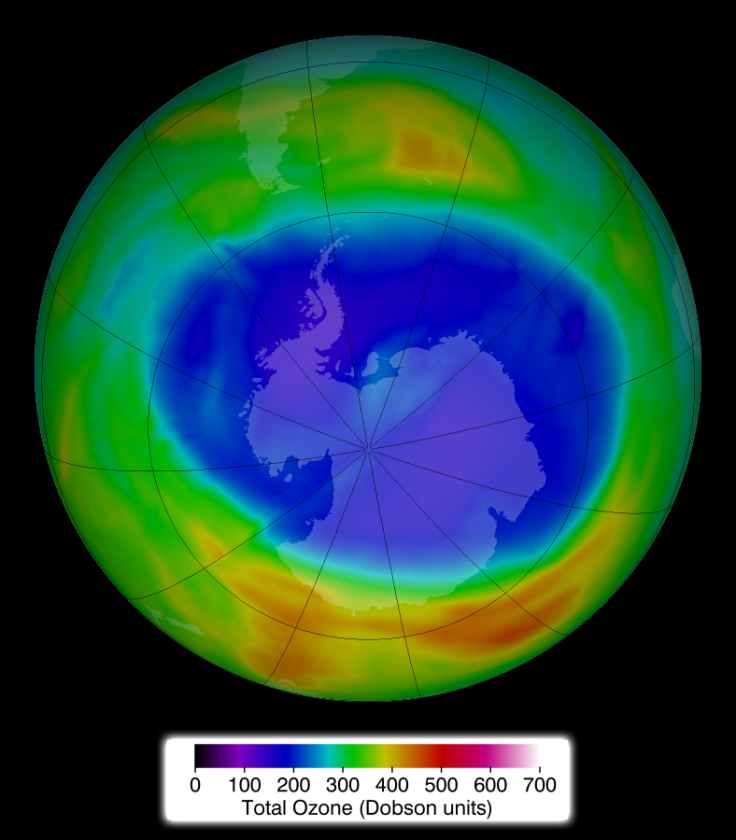Antarctic Ozone Hole Reaches Size of North America in Annual Peak

The Antarctic ozone hole has peaked in size for the year, covering an area the size of North America.
Researchers from Nasa and the National Oceanic and Atmospheric Administration (NOAA) said the hole reached 24.1 million square kilometres – slightly bigger than the peak in 2013.
The largest single day ozone hole recorded for the year was 29.9 million square kilometres on 9 September. Experts say this year's recordings are comparable with the previous three years and that it is smaller than the large holes seen between 1998 and 2006.
The Antarctic ozone hole forms and expands in August and September. Since the Montreal Protocol agreement starting in 1987, which regulated ozone depleting substances, levels have declined by about 9% on average.
Findings also showed the minimum thickness of the ozone layer this year was 113 Dobson units – which translates to about one millimetre if the layer was brought down to Earth's surface. In the 1960s, the average was 250-350 Dobson units.
Researchers are now looking to establish if the trend over the last decade is from temperature increases or declines in ozone depleting substances. The ozone layer helps to shield the planet from potentially harmful ultraviolet radiation.
Paul A Newman, chief scientist for atmospheres at Nasa's Goddard Space Flight Centre, said: "Year-to-year weather variability significantly impacts Antarctica ozone because warmer stratospheric temperatures can reduce ozone depletion. The ozone hole area is smaller than what we saw in the late-1990s and early 2000s, and we know that chlorine levels are decreasing.
"However, we are still uncertain about whether a long-term Antarctic stratospheric temperature warming might be reducing this ozone depletion."
© Copyright IBTimes 2025. All rights reserved.






















